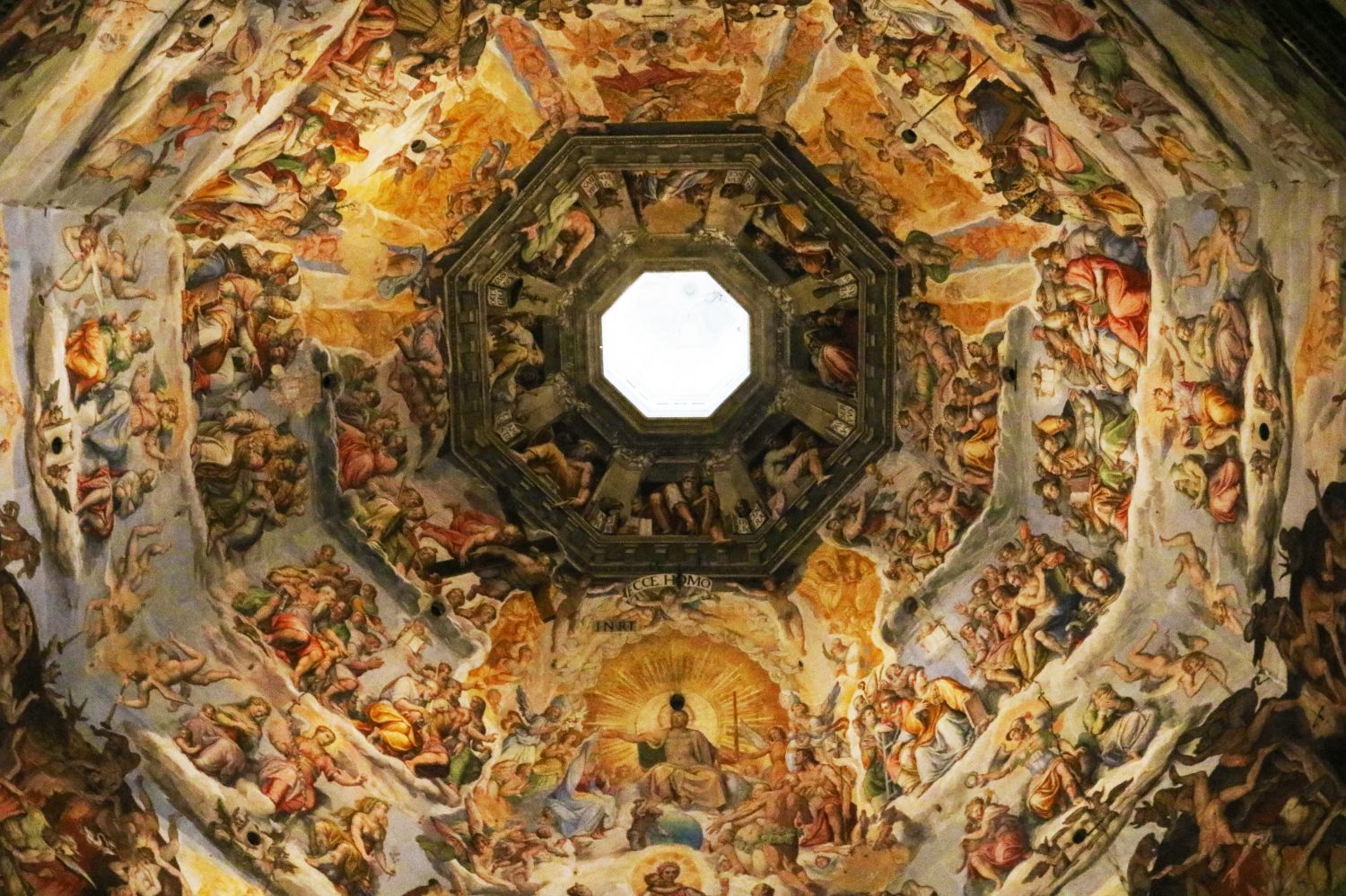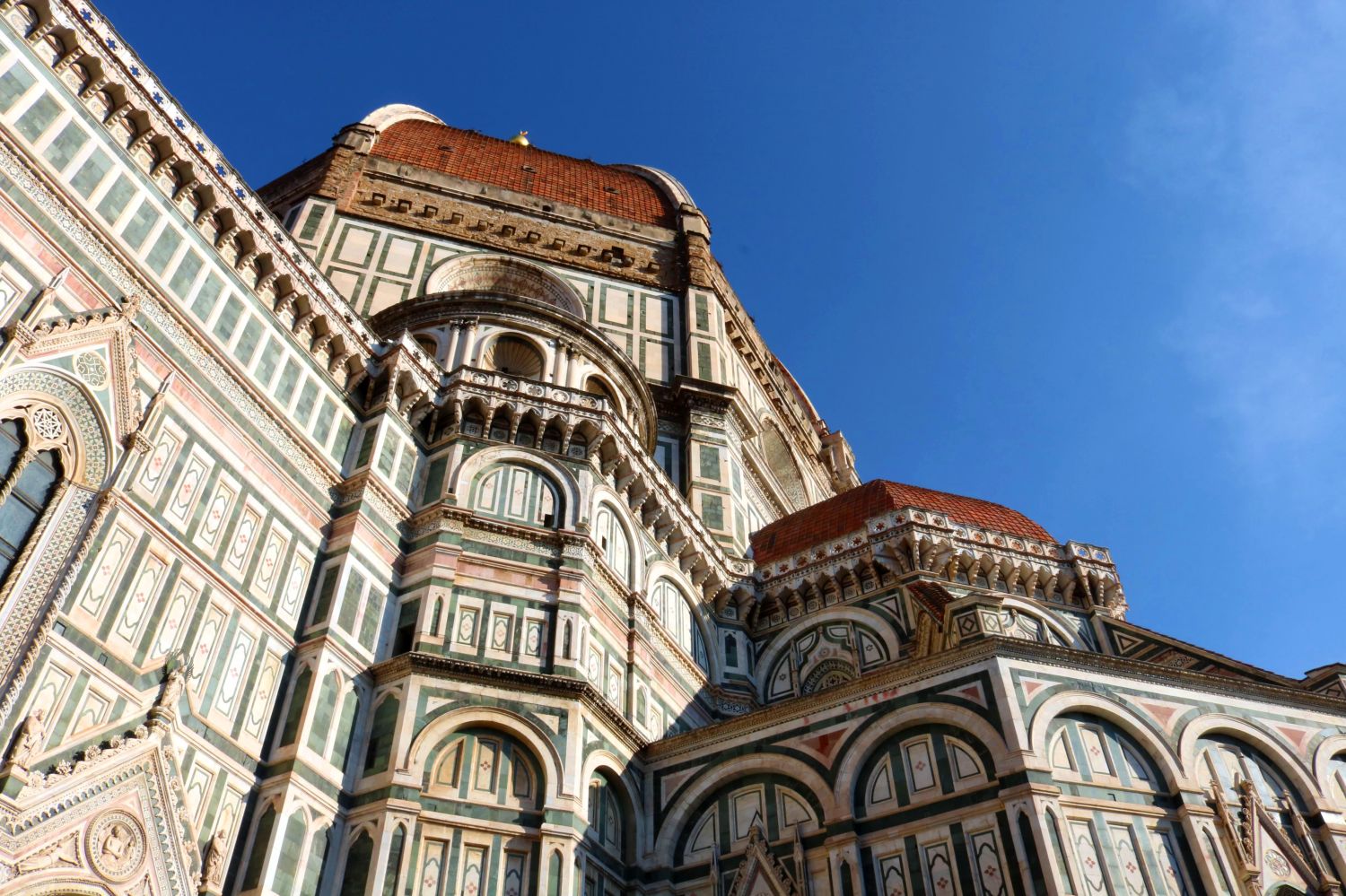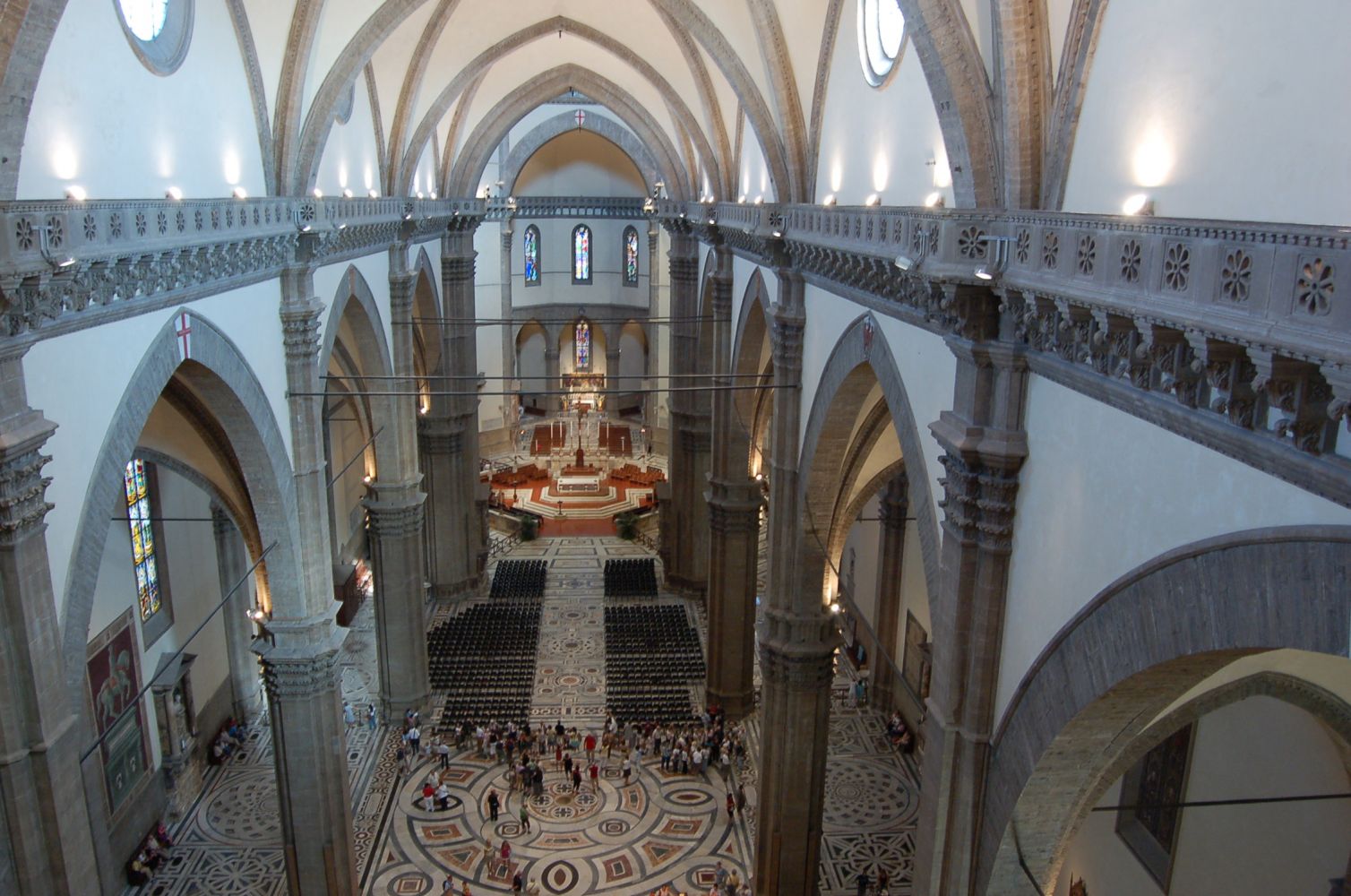



The Cathedral of Santa Maria del Fiore is located in Piazza del Duomo, in Florence. Its construction began in the thirteenth century as a project by Arnolfo di Cambio, a famous architect and sculptor who loved the Gothic style.
The cathedral has 3 naves, 1 main and 2 lateral, plus a rear apse. When di Cambio disappeared, the construction of the cathedral was halted and was resumed in 1334 by Giotto. However, construction had to come to a stop again in 1337 due to his death. The construction of this magnificent project continues with Andrea Pisano and Francesco Talenti, who completed it in 1359.
In the mid-fourteenth century, Florentine artists set aside the Gothic style to make room for the Roman one. The gothic air of the cathedral was hidden behind the red marble of Siena, the white of Carrara and the green of Prato.
In 1418 the competition to build the dome was held. Seventeen architects presented themselves, including Filippo Brunelleschi, who was the only one to reach the bottom of the selections. His idea was simple and ingenious: to create a "self-supporting" dome, capable of supporting itself during its construction.
Brunelleschi began with the construction of the project, and in 1436 the dome was completed. The red dome of the cathedral was then the largest in the world, with a diameter of 45 meters and a height of 100 meters, and soon after became the symbol of Florence.
The cathedral of Florence is one of the largest churches in Christianity with its 160 meters in length, 43 meters in width and 90 meters in transept. The internal height of the dome is 100 meters. It was also an important symbol of wealth and power of the Tuscan capital in the XIII and XIV centuries.
When admiring the dome from the inside, it is possible to admire the frescoes made by Giorgio Vasari and Federico Zuccari. In Brunelleschi's original project, the dome was to be covered internally with mosaics, but Cosimo I de Medici preferred to entrust the project to Vasari, who frescoed it. The frescoed surface is about 3600 square meters large and 700 figures are depicted in the paintings.

The gnomon, also known as a "bronzina," is a small bronze device with a few centimeters-diameter opening that is positioned horizontally in the drum of the dome's southern half. More specifically, it can be called a pinhole gnomon, because when sunlight passes through the opening, a circle of light is produced on the floor. It was created more than 500 years ago, in 1475, by the mathematician Paolo dal Pozzo Toscanelli, and is known to be one of the first time-keeping astronomical instruments, yet one of the simplest ever created.
In actuality, the gnomon's function was to precisely determine the astronomical date of the solstice, and thus, the length of the solar year. The fundamental goal was to maintain agreement between the astronomical and liturgical calendars, in order to prevent discrepancies, which were occurring at the time due to calendar mistakes. Keep in mind that during that time period, little was known about the time, the sun and outer space.
The gnomon also responded to an even more ambitious objective – that of determining the ‘ecliptic’, or in other words, testing whether the tilt of the earth's axis remains constant.
Another of its purposes is written in Latin on the marble wall near the choir inside the cathedral, which says that the gnomon also served to measure the exact date of Easter.
At noon on June 21st , the day of the solstice, the sun shines through the gnomon and is most precisely aligned with the bronze meridian line which appears on a marble circle on the floor of the duomo, about 90 meters from where the gnomon is placed. The marble circle serves as markings for the solstices, as the light created by the gnomon creates an oval shape that is identical to the marble circle on the floor of the duomo.
However this extraordinary phenomenon does not only happen on June 21st, but happens from the end of May till the end of July, at noon. Apparently, this spectacle also occurs when the weather is cloudy.
In today's day and age, the gnomon was superseded by more advanced telescopes and lost its use for astronomical research, but it continued to be useful for many years in determining the stability of the Dome.
Leonardo Ximenes, Grand-Ducal mathematician and Jesuit, obtained funding and conducted a study to calibrate the Gnomon and to equip it to an appropriate meridian line. This was needed as he noticed that the floor was not perfectly horizontal. A strip had to be placed to level the line of the bronze Sundial. It is in the position in which we still see today.
The "sun in the Cathedral" miracle has been a spectacle that is free to the public and draws a large number of enthusiastic amateur astronomers and tourists every year, even though it no longer serves its original scientific purpose. One cannot help but be mesmerized by the appearance of Brunelleschi's design for the sun in the sacred space, as well as by how quickly and precisely it moves along the sundial until it precisely overlaps the marble circle at the precise moment of "Florentine noon."
